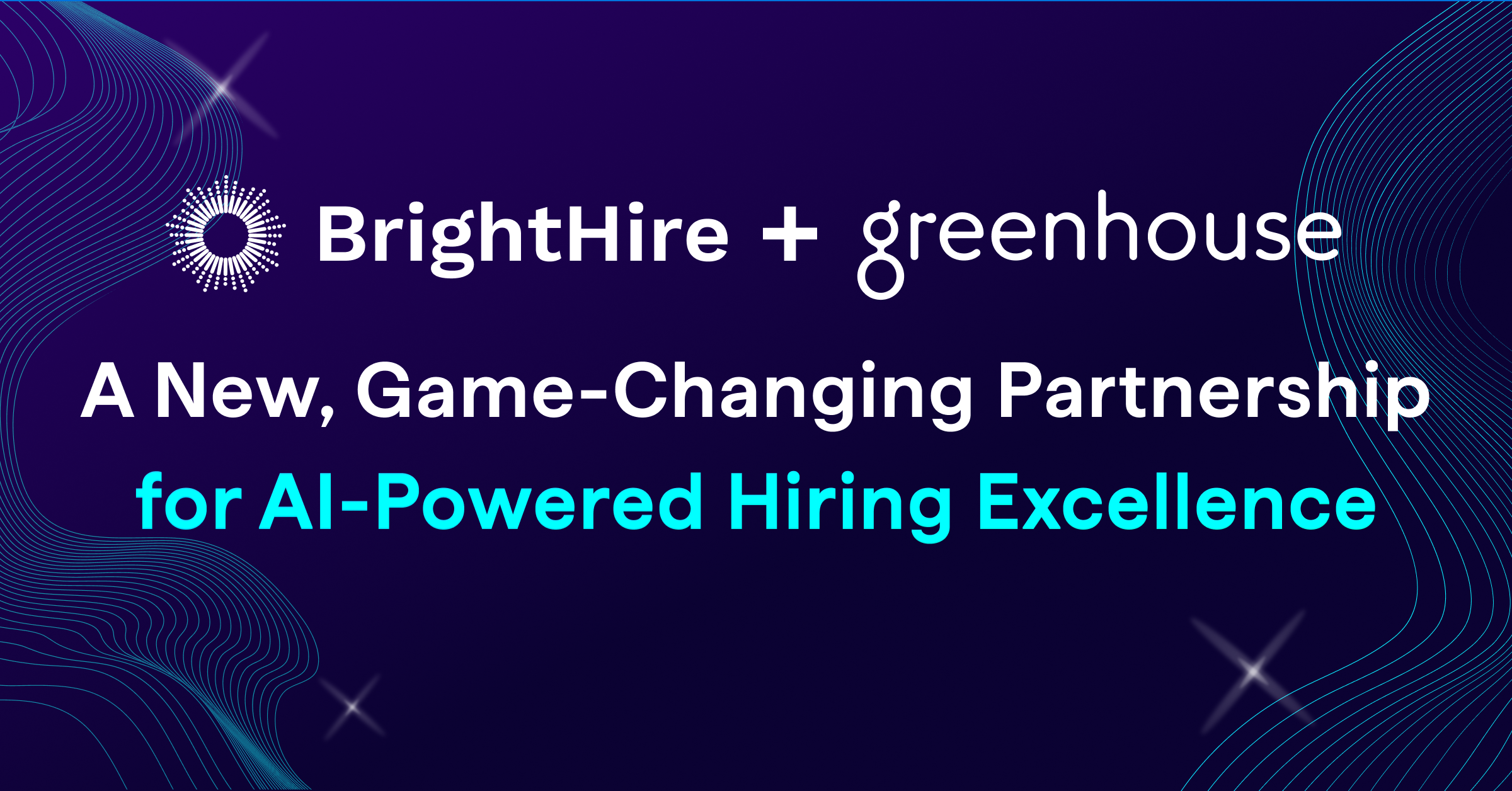Every company wants to hire the best and brightest employees for their teams. People who are driven, committed, and aligned with your company’s culture are often the best employees. But it’s notoriously difficult to measure whether or not your company’s hiring process and methods are actually effective and able to produce high-quality candidates.
This is why quality of hire has become so important to talent acquisition (TA) teams in recent years.
What is quality of hire?
In short, quality of hire is all about the value new hires provide to their team and company. But measuring quality of hire goes both ways—sometimes the hired employee simply isn’t the right fit, and sometimes the hire is wonderful but the role wasn’t what they expected or they weren’t onboarded properly. Other times, hiring managers aren’t trained or well-equipped to judge candidates when interviewing.
Plus, the metrics used to measure quality of hire differ for everyone and are dependent on company size, growth stage, overall goals and needs, and a number of other factors.
TA teams and recruiters often lead the quality of hire charge, but it’s a big task to achieve that constantly evolves and adjusts. To successfully measure and improve your company’s quality of hire requires alignment with executives and leadership, their goals, and their expectations.
The good news: identifying and measuring quality of hire metrics is not impossible to achieve. To navigate how to measure and improve your quality of hire, read on for guidance from talent acquisition leaders who have done it successfully at their companies.
Why quality of hire matters and how poor hiring decisions affect it
The benefits of high quality of hire are obvious—solid talent is hired to bring continued value to the company. But what happens when you don’t measure quality of hire or focus on it at all? Some companies tend to focus on filling open headcount as fast as possible, especially in today’s uncertain economy. It may seem like the right strategy in the short term, but hiring indiscriminately can cause a lot of negative impact down the line.
By not tracking your quality of hire, you risk:
More frequent turnover
When new hires don’t match the needs of the team or company, neither of them are happy.
“We think about quality of hire super holistically,” says Caitlin Metteer, Director of Recruiting at Lever. “There are two sides to quality of hire. If you end up hiring someone who’s a rockstar but not really happy in their role, they won’t get the growth they’re looking for and they probably won’t stay very long. You have to make sure there’s a good two-way match.”
This mismatch can cause lower quality of work, reduced employee happiness, and additional stress on all parties.
Unnecessary money and time spent on repetitive hiring and onboarding
It’s easy to underestimate just how much money goes into the hiring process for each candidate. But when you consider all of the people involved, the total hours spent interviewing and onboarding, and any technology and salary—not to mention insurance coverage and other costs—the money spent on a single new hire compiles quickly.
Multiply that by how often you have to hire for the same few roles as candidates join and then leave in under a year, it’s impossible to avoid the exponential unnecessary cost.
Productivity loss
Ideally, TA teams can spend their time working on company objectives—like setting hiring strategies, instituting pay transparency policies, managing interview training, and more—but when attrition is high and quality of hire is low, there’s no time for anything else besides finding new people as quickly as possible to fill those seats.
Damage to team and company morale
Unhappy new hires and a constantly revolving door of candidates causes a lot of uncertainty and instability for the teams it affects. That puts a lot of pressure on remaining employees to get more work done in an environment they don’t feel they can rely on for support.
That feeling can trickle into every department in the company and has far reaching effects, even for leadership and executives. Plus, that kind of low morale is something investors and advisors can see, too.
Unwarranted blame and strain placed on TA teams
If there’s a misunderstanding across the company on talent acqusition’s involvement in quality of hire, it’s easy to see why a lot of the blame is placed on them when new hire and employee attrition are high and average tenure is short. This may impact the employee happiness of TA teams and cause higher attrition in that department, too. But quality of hire is a responsibility for the entire company to shoulder.
“Quality of hire is not a new thing. It’s been on the top of all of our minds for a long time, so it’s really a company-wide effort. I don’t see it as talent acquisition only,” says Elena Stefanopol, Director of Recruiting at Labelbox.
Clearly, it’s important to focus on quality of hire in both the short and long term so your team can increase employee retention and morale—and spend more time improving your hiring process, rather than constantly hiring new people.
We mentioned earlier that measuring quality of hire isn’t a one-size-fits-all approach. Let’s dig in a little more on how you can think about this and find the right recipe for your company.
How to measure quality of hire
When it comes down to it, measuring quality of hire is completely dependent on the organization and teams you work with. So the general answer to how to measure it is: “It depends.” There are dozens upon dozens of potential metrics and touchpoints to look at pre-hire, post-hire, and during the recruiting process.
However, there are some consistent indicators across companies with high quality of hire that you can start with: retention and performance.
New hire retention
Whether or not new hires stay at the company for extended periods of time is a solid indicator of successful quality of hire. The higher the retention rate is, the more likely it is that your company has a high quality of hire.
New hire performance
Performance reviews are super common for a reason. They can be a great way to measure employee effectiveness over the past quarter or year and see whether or not new hires were the right fit for the role.
Some other metrics or touchpoints you could consider—depending on your company and team needs—include:
- Measured employee output and/or productivity
- New hire happiness
- Attrition
- Onboarding success
- Hiring manager satisfaction
- Offboarding surveys and exit interviews
- Any department-specific metrics around advanced, specialized skill sets
No matter what, it’s important to keep in mind that none of these metrics paint the entire picture if you don’t have the right systems in place or you lack executive buy-in and company alignment. Simply measuring these things is easy—knowing what you’ll do with the information and how everyone can pitch in is something altogether different.
Remember: always have a goal in mind for any metric you measure. The specific metrics don’t matter nearly as much as the behavior and intention around them.
“Measuring something just to measure it doesn’t provide a lot of value. Instead of being really specific on what metrics you track, say ‘What are the things we’re measuring that can make a difference?’ What you choose should change your behavior in order to drive different results,” says Jodi Hill, VP of Talent Acquisition at Phreesia.
6 ways to improve quality of hire
Now that we know how to measure quality of hire, let’s dive into how to actually raise it. True quality of hire is about much more than specific metrics and your team’s hiring processes. For the companies with the highest retention rates in the business, quality of hire is a full company initiative and priority.
Follow the below steps to improve your quality of hire—and remember, it’s a company-wide effort to achieve the best results:
Make the relationship between talent acquisition and the rest of the company a true partnership
The role you play in your company can be transactional, or it can be more of a team effort and true partnership where talent acquisition leads the way. Companies with high quality of hire focus on educating and empowering everyone involved in the hiring process and constantly communicating feedback and sharing ideas for improvement. This partnership makes it easier for department leaders and executives to openly share what’s important to them when it comes to new hires.
Invest in interview training
Interviewing candidates is a very, very small part of any hiring manager or interviewer’s job. Because of this, they don’t always have a lot of experience in the interviewer’s seat and might not be able to properly judge great candidates from the bad ones.
By providing interview training and coaching, you can help hiring managers and interviewers understand how to run consistent interviews, identify key competencies, pick up on candidate signal, and reduce the impact of unconscious bias.
Embrace opportunities to educate others and bring them along for the journey
When hiring managers and teammates ask about a part of the hiring process, it’s easy to default to “Because that’s the process,” or “That’s the way it’s always been done.” However, those are knee-jerk, defensive reactions that isolate others.
Instead, deepen your partnership by taking the opportunity to educate those involved in the hiring process on why the process is the way it is, what you’ve learned from it, and mention that you’re always happy to accept ideas or feedback. The best hiring decisions are made when you bring others along on the hiring journey.
“You can maintain a level of team alignment by giving space for feedback and questions. Consistently check in and remind people what you’re doing, because there are always moments to help educate others. Bringing people along is very powerful,” says Mary Price, Vice President of Talent at Abnormal.
Maintaining consistency and alignment is key
The best talent acquisition teams know that consistency leads to the best results. Ensure there’s consistency and maintain alignment by:
- Making sure your interview process is structured and consistent, so you can give every candidate the same experience every time.
- Checking in with new hires often, especially during their first 90 days, and asking them if the role matches what they were told during the interview process.
- Staying in touch with department heads and executives so you know if and when team priorities shift, so you can adjust your strategies as needed.
- Maintaining open communication and asking for feedback from everyone involved in the hiring process.
Add an interview intelligence platform to your recruiting tech stack
Without visibility into your interviews, it’s nearly impossible to address any issues that impact your quality of hire. With an interview intelligence platform like BrightHire, you can record and transcribe every interview and access an abundance of valuable interview data and insights that transform how you hire. BrightHire can guide interviewers in real time to run a structured and consistent interview process, while capturing notes and important context from every conversation.
Not only does having full visibility into your interviews help you improve your hiring process. It also allows you to review successful new hire performance down the road and tie that experience back to their interviews to look for consistency—and incorporate your findings into future interviews to continue raising quality of hire.
Don’t try to do everything at once
Making a difference requires small, slow change. If you change everything about your hiring process in one swoop, it’s impossible to know what works and what doesn’t—and that much change at once can cause many people to feel paralyzed and overwhelmed, especially if there was no focus on change management. Start small, focusing on one improvement at a time. Small incremental changes are the key to successful long term results.
As a final note on improving quality of hire: No matter how great you get at placing the right hires in the right roles, there will be misses and mistakes at times. They’re an unavoidable part of recruitment and talent acquisition, and not necessarily a reflection on your team or hiring process.
“Sometimes, you just get it wrong. We’re hiring people and we’re people ourselves. We can’t be perfect all the time”—a good reminder from Jennifer Oswald, Head of People Strategy at Goodtime.
Don’t let one of those hiring misses underscore the important work you and your team are doing to improve your quality of hire and employee happiness.
Remove the guesswork and create the right quality of hire recipe for your company
Measuring and improving your company’s quality of hire doesn’t have to be out of reach. Educating hiring managers and everyone involved in the process, creating a true hiring partnership, and getting visibility into your interviews are all great ways to start improving your quality of hire—or kicking off the initiative in the first place.
If you want to dive even deeper into quality of hire, how it affects your TA team and company as a whole, and how to assess and raise quality of hire for your company, we have just the thing for you. Watch our on-demand webinar, Quality of Hire 101: What it Means for Your TA Team, and learn from top TA leaders at Labelbox, Lever, and Goodtime.









